In order to generate a more inclusive dataset of Pseudomonas genes mapped to putative in-paralogs and putative orthologs in other Pseudomonas species/strains, we developed a Pseudomonas Orthologous Groups classification system.
To generate ortholog groups, pair-wise DIAMOND searches were run on all genomes in the database to find reciprocal best hits (RBHs) for each gene. These analyses often resulted in multiple candidate genes for RBH status, which were narrowed down by examining the similarity between the query's flanking genes and the hit's flanking genes. If two candidate genes were directly adjacent, they where both accepted as RBHs that involve putative in-parology.
Pairwise intra-genome DIAMOND searches were also performed to acquire in-paralog information (i.e. gene duplications occurring after species divergence). If two genes in one genome were reciprocally more similar to each other than to any gene in the other genomes, the two genes were designated putative in-paralogs. Ortholog groups are built by starting with a seed gene and then adding all genes to which there is a RBH or in-paralog relationship.
Every new gene added to an ortholog group was then treated as a seed gene and the addition process was repeated until all qualifying genes had been added. The result was the development of orthologous groups, specifically generated for Pseudomonas species genomes, which can be used to sort search results.
Pseudomonas Ortholog Group POG001179
| Strain | Locus Tag | Description | Same-Strain Members | Fragment ? | |
|---|---|---|---|---|---|
| Pseudomonas aeruginosa AZPAE14404 | NQ62_RS25070 |
LysR family transcriptional regulator
|
4 same-strain members: NQ62_RS00150 NQ62_RS21375 NQ62_RS25070 NQ62_RS29490 |
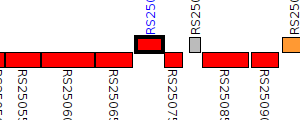
|
|
| Pseudomonas aeruginosa AZPAE14404 | NQ62_RS29490 |
transcriptional regulator
|
4 same-strain members: NQ62_RS00150 NQ62_RS21375 NQ62_RS25070 NQ62_RS29490 |

|
|
| Pseudomonas aeruginosa AZPAE14404 | NQ62_RS00150 |
LysR family transcriptional regulator
|
4 same-strain members: NQ62_RS00150 NQ62_RS21375 NQ62_RS25070 NQ62_RS29490 |
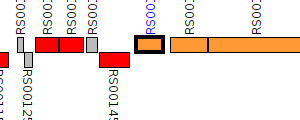
|
|
| Pseudomonas aeruginosa AZPAE14410 | NQ63_RS23915 |
LysR family transcriptional regulator
|
5 same-strain members: NQ63_RS17610 NQ63_RS23915 NQ63_RS26160 NQ63_RS07675 NQ63_RS09435 |
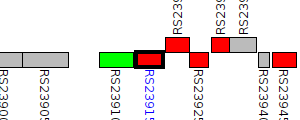
|
|
| Pseudomonas aeruginosa AZPAE14410 | NQ63_RS26160 |
LysR family transcriptional regulator
|
5 same-strain members: NQ63_RS17610 NQ63_RS23915 NQ63_RS26160 NQ63_RS07675 NQ63_RS09435 |
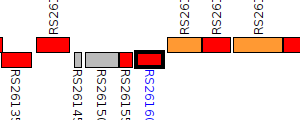
|
|
| Pseudomonas aeruginosa AZPAE14410 | NQ63_RS07675 |
LysR family transcriptional regulator
|
5 same-strain members: NQ63_RS17610 NQ63_RS23915 NQ63_RS26160 NQ63_RS07675 NQ63_RS09435 |

|
|
| Pseudomonas aeruginosa AZPAE14410 | NQ63_RS09435 |
LysR family transcriptional regulator
|
5 same-strain members: NQ63_RS17610 NQ63_RS23915 NQ63_RS26160 NQ63_RS07675 NQ63_RS09435 |
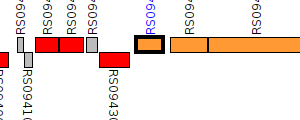
|
|
| Pseudomonas aeruginosa AZPAE14410 | NQ63_RS17610 |
transcriptional regulator
|
5 same-strain members: NQ63_RS17610 NQ63_RS23915 NQ63_RS26160 NQ63_RS07675 NQ63_RS09435 |
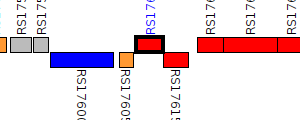
|
|
| Pseudomonas aeruginosa AZPAE14443 | NQ69_RS22005 |
LysR family transcriptional regulator
|
5 same-strain members: NQ69_RS01385 NQ69_RS22005 NQ69_RS26670 NQ69_RS07340 NQ69_RS11805 |
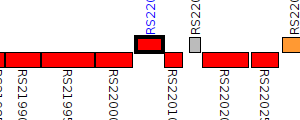
|
|
| Pseudomonas aeruginosa AZPAE14443 | NQ69_RS26670 |
LysR family transcriptional regulator
|
5 same-strain members: NQ69_RS01385 NQ69_RS22005 NQ69_RS26670 NQ69_RS07340 NQ69_RS11805 |

|
|
| Pseudomonas aeruginosa AZPAE14443 | NQ69_RS07340 |
LysR family transcriptional regulator
|
5 same-strain members: NQ69_RS01385 NQ69_RS22005 NQ69_RS26670 NQ69_RS07340 NQ69_RS11805 |

|
|
| Pseudomonas aeruginosa AZPAE14443 | NQ69_RS11805 |
transcriptional regulator
|
5 same-strain members: NQ69_RS01385 NQ69_RS22005 NQ69_RS26670 NQ69_RS07340 NQ69_RS11805 |
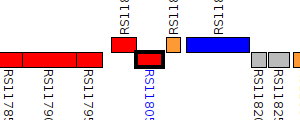
|
|
| Pseudomonas aeruginosa AZPAE14443 | NQ69_RS01385 |
LysR family transcriptional regulator
|
5 same-strain members: NQ69_RS01385 NQ69_RS22005 NQ69_RS26670 NQ69_RS07340 NQ69_RS11805 |
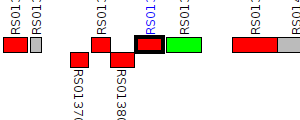
|
|
| Pseudomonas aeruginosa AZPAE14453 | NQ70_RS00410 |
LysR family transcriptional regulator
|
5 same-strain members: NQ70_RS00410 NQ70_RS19395 NQ70_RS22985 NQ70_RS01925 NQ70_RS29640 |
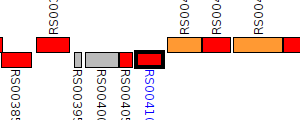
|
|
| Pseudomonas aeruginosa AZPAE14453 | NQ70_RS19395 |
transcriptional regulator
|
5 same-strain members: NQ70_RS00410 NQ70_RS19395 NQ70_RS22985 NQ70_RS01925 NQ70_RS29640 |

|
|
| Pseudomonas aeruginosa AZPAE14453 | NQ70_RS22985 |
LysR family transcriptional regulator
|
5 same-strain members: NQ70_RS00410 NQ70_RS19395 NQ70_RS22985 NQ70_RS01925 NQ70_RS29640 |

|
|
| Pseudomonas aeruginosa AZPAE14453 | NQ70_RS01925 |
LysR family transcriptional regulator
|
5 same-strain members: NQ70_RS00410 NQ70_RS19395 NQ70_RS22985 NQ70_RS01925 NQ70_RS29640 |
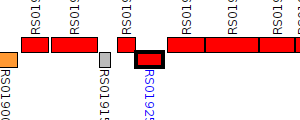
|
|
| Pseudomonas aeruginosa AZPAE14453 | NQ70_RS29640 |
LysR family transcriptional regulator
|
5 same-strain members: NQ70_RS00410 NQ70_RS19395 NQ70_RS22985 NQ70_RS01925 NQ70_RS29640 |
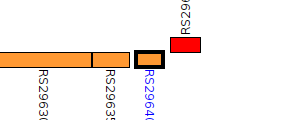
|
|
| Pseudomonas aeruginosa AZPAE14509 | NQ74_RS00510 |
LysR family transcriptional regulator
|
4 same-strain members: NQ74_RS08925 NQ74_RS12205 NQ74_RS00510 NQ74_RS19490 |

|
|
| Pseudomonas aeruginosa AZPAE14509 | NQ74_RS19490 |
transcriptional regulator
|
4 same-strain members: NQ74_RS08925 NQ74_RS12205 NQ74_RS00510 NQ74_RS19490 |

|